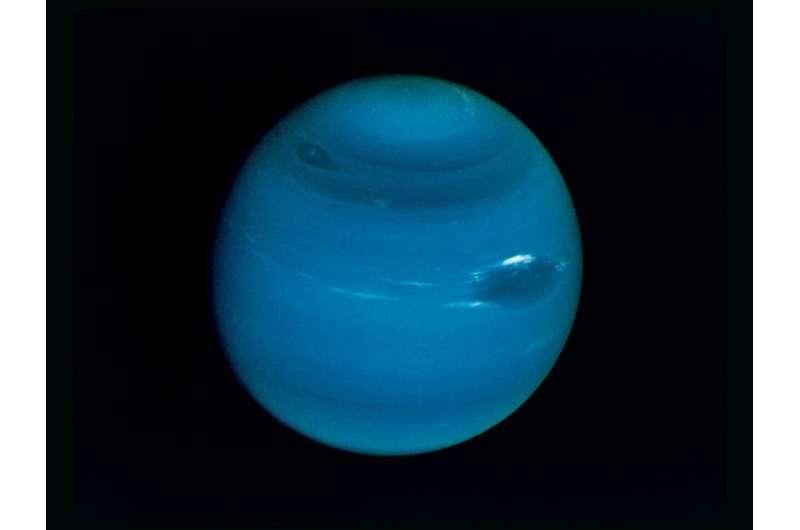While superficially similar to Jupiter and Saturn, with their hydrogen and helium atmospheres, Uranus and Neptune also contain sizeable heavier elements in the form of "supercritical" liquid oceans deep below the surface clouds, which account for much of both planets' masses.
Both worlds also have methane in their atmospheres—accounting for their blue appearance—although less in the case of Neptune, where it is concentrated lower in the atmosphere, so becomes less of a factor in modeling any probe flight.
As part of any future mission to one or both worlds, an atmospheric probe resembling the one flown by NASA's Galileo mission to Jupiter is high on scientific wish lists.
"The challenge is that any probe would be subject to high pressures and temperatures, and therefore would require a high-performance thermal protection system to endure its atmospheric entry for a useful amount of time," explains Louis Walpot, ESA aerothermodynamics engineer.
"To begin designing such a system we need first to adapt current European testing facilities in order to reproduce the atmospheric compositions and velocities involved."
The entry rate of atmospheric probes is set by the speed required to orbit them—about 25 km/s inertial velocity in the case of Uranus and Neptune.
This has been a joint UK/German/ESA project, supported by the Agency's General Support Technology Program. As a next step, work is underway to extend the simulated velocities achievable in both the Oxford and Stuttgart wind tunnels.
Provided by European Space Agency



